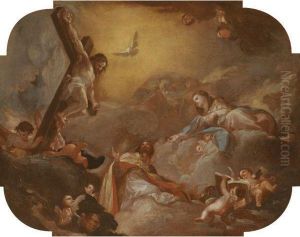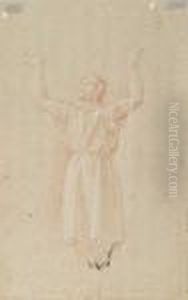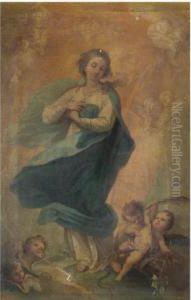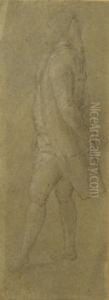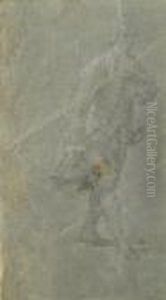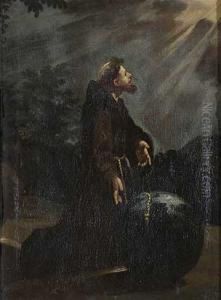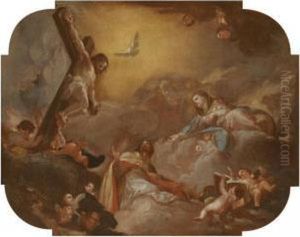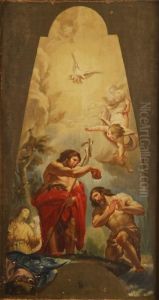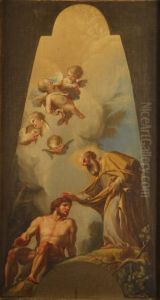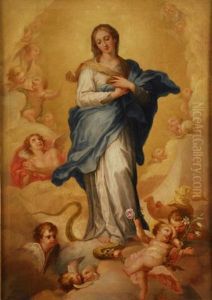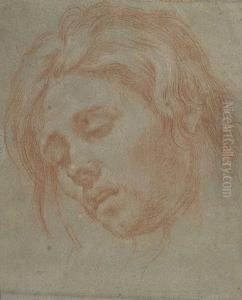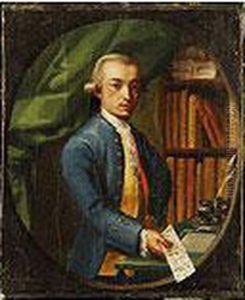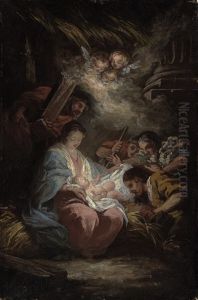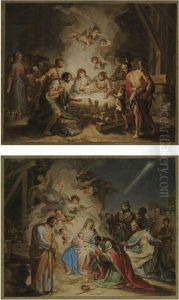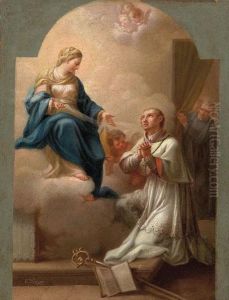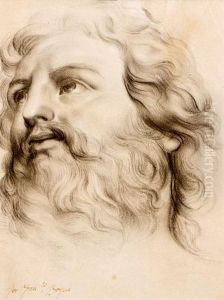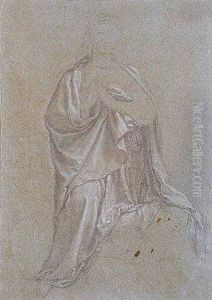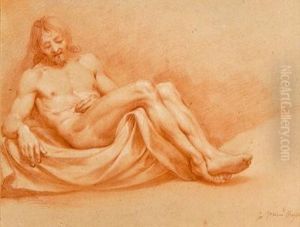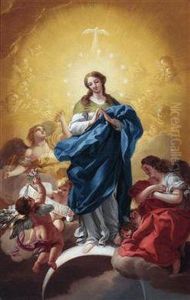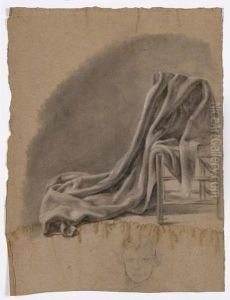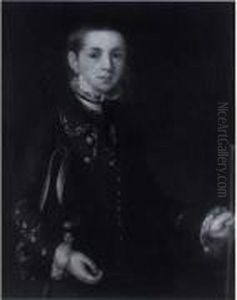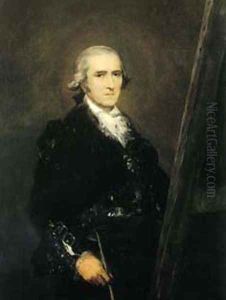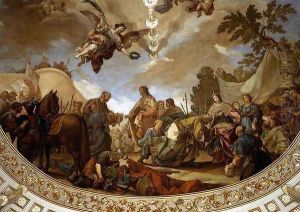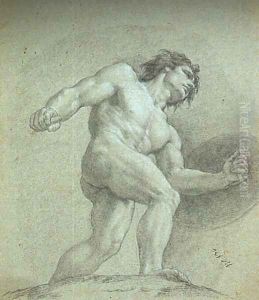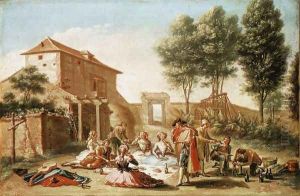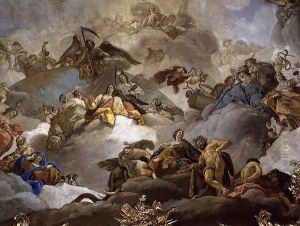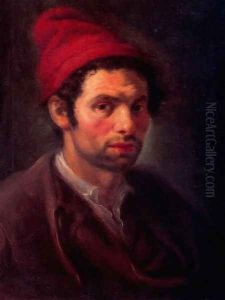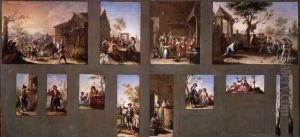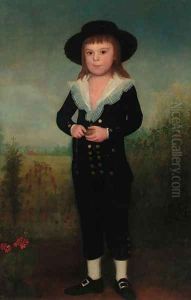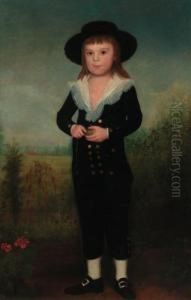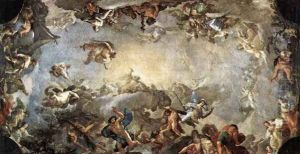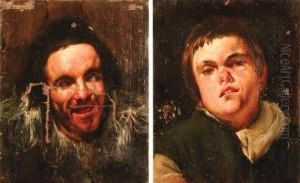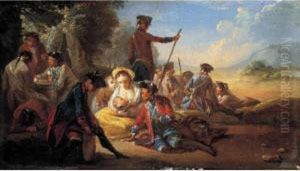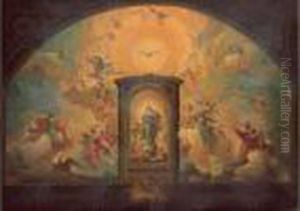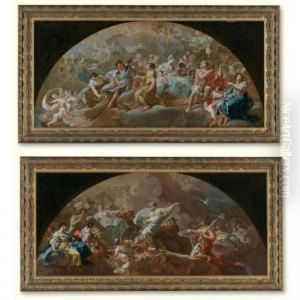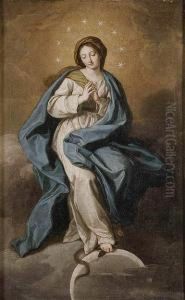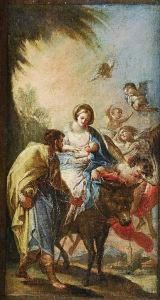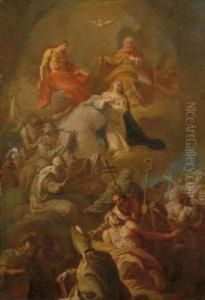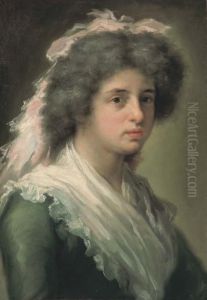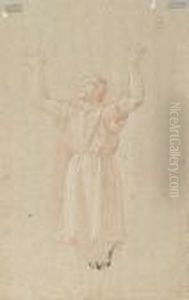Francisco Bayeu Y Subias Paintings
Francisco Bayeu y Subías was a prominent Spanish painter, born on March 9, 1734, in Zaragoza, Spain. He emerged as a significant figure in the Spanish artistic scene of the 18th century, especially known for his contributions to the Rococo period and Neoclassicism. Bayeu showed artistic talent at a young age and was initially trained by his brother, Ramón Bayeu, also a painter. He later moved to Madrid to further his studies and career, eventually becoming a pupil of the illustrious German artist Anton Raphael Mengs. Mengs was a leading proponent of the Neoclassical style, and his influence on Bayeu was profound, evident in the latter's adoption of Neoclassical principles in his work. Bayeu's early works were predominantly religious in nature, reflecting the dominant themes of the Spanish Counter-Reformation. However, as his career progressed, he became more involved with the Spanish monarchy, which led to numerous commissions that required a different artistic approach. In 1767, Bayeu was appointed as a painter to the Royal Court by King Charles III of Spain. This prestigious position not only elevated his status but also allowed him to work on a variety of projects, including designing tapestries for the Royal Tapestry Factory of Santa Bárbara. His designs for tapestries showcased both his mastery of the Rococo style and his transition toward Neoclassicism. Bayeu's collaboration with Francisco Goya, who was his brother-in-law and one of the most renowned Spanish artists of the time, is also noteworthy. Their professional relationship was complex, with Bayeu initially supporting Goya's admission to the Royal Academy of Fine Art of San Fernando. However, the two later had disagreements, particularly as Goya's innovative style began to eclipse the more traditional approach of Bayeu. Despite the competition, Bayeu continued to enjoy royal patronage and completed several important frescoes and altarpieces for various churches and cathedrals. Francisco Bayeu y Subías passed away on August 4, 1795, in Madrid. His legacy is preserved in his numerous works that can be seen in various churches, cathedrals, and museums across Spain, reflecting the transition of Spanish art from Rococo to Neoclassicism during the 18th century.
